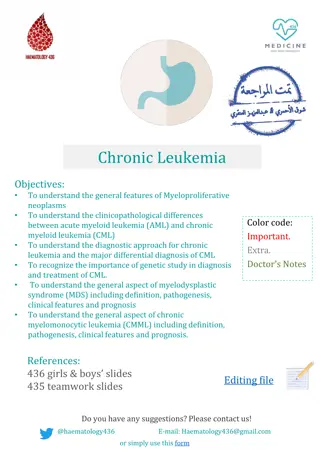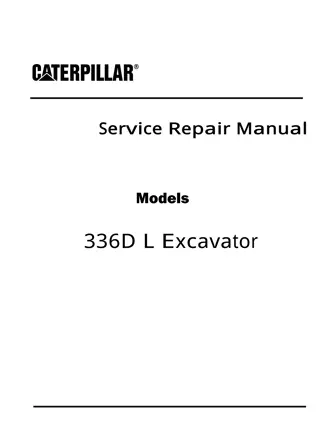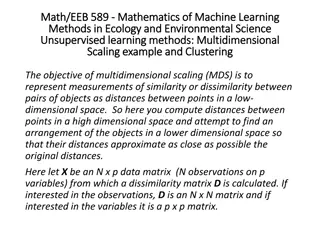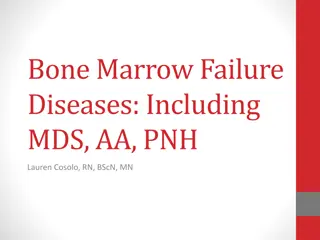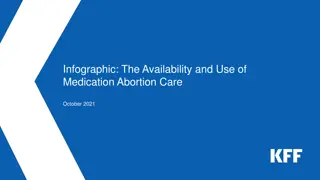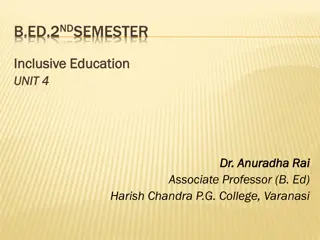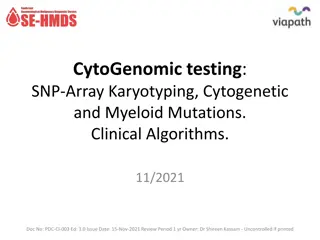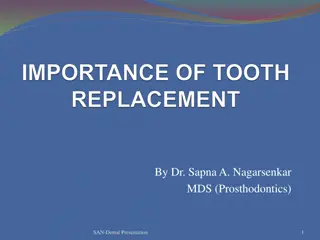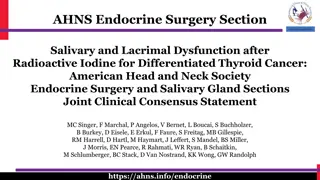Comprehensive Guide to MDS 3.0 and RAI Manual
Detailed breakdown of the Minimum Data Set (MDS) 3.0 and the Resident Assessment Instrument (RAI) Manual, including chapters on assessments, care planning, submission processes, and the Skilled Nursing Facility Prospective Payment System. The manual provides crucial information on completing MDS items accurately, understanding coding instructions, and enhancing resident care outcomes. Appendices offer glossary, contact resources, assessment tools, and scoring rules to support thorough assessment practices.
Download Presentation

Please find below an Image/Link to download the presentation.
The content on the website is provided AS IS for your information and personal use only. It may not be sold, licensed, or shared on other websites without obtaining consent from the author.If you encounter any issues during the download, it is possible that the publisher has removed the file from their server.
You are allowed to download the files provided on this website for personal or commercial use, subject to the condition that they are used lawfully. All files are the property of their respective owners.
The content on the website is provided AS IS for your information and personal use only. It may not be sold, licensed, or shared on other websites without obtaining consent from the author.
E N D
Presentation Transcript
Layout of RAI Manual Chapter 1 RAI Chapter 2 Assessments Chapter 3 Item-by-Item Guide Chapter 4 Care Area Assessment (CAA) Process and Care Planning Chapter 5 Submission and Correction Chapter 6 Skilled Prospective Payment System (PPS) You can access the manual at: http://www.cms.gov/Medicare/Quality-Initiatives-Patient-Assessment- Instruments/NursingHomeQualityInits/MDS30RAIManual.html
Chapters Chapter 1 contains important information about the content and completion of the RAI and how it serves the nursing facility staff in problem identification. There is also information about protecting the privacy of the MDS information, among other topics. Chapter 2 details scheduling, completion and submission timeframes for OBRA and PPS purposes. There are lots of definitions in this chapter and some very useful charts that outline timeframes related to scheduling, completion and submission. Chapter 3 contains directions for completing each and every MDS item. It is a must that this information be used to guide assessments; simply referring to the form (or item set) for directions will lead to inaccurate coding.
Chapters cont. Chapter 4 is titled Care Area Assessment (CAA) Process and Care Planning here you will find information about the RAI process and how the CAAs provide the critical link between the MDS and the care plan. Chapter 5 details Submission and Correction of the MDS Assessments. Chapter 6 outlines the Medicare Skilled Nursing Facility Prospective Payment System (SNF PPS) there is some overview information about SNF PPS in this chapter as well as very detailed information about the RUG-IV system.
Appendices Appendix A Glossary and Common Acronyms Appendix B SA & CMS RO RAI/MDS Contacts Appendix C Care Area Assessment (CAA) Resources Appendix D Interviewing to Increase Resident Voice Appendix E PHQ-9 Scoring Rules & Instruction for BIMS Appendix F Item Matrix Appendix G References Appendix H MDS 3.0 Item Sets
CHAPTER 3: OVERVIEW OF THE ITEM-BY-ITEM GUIDE
Chapter 3 Provides Item-by Item coding instructions for all required sections and items in the MDS version 3.0 item set. Goal is to facilitate the accurate coding of the resident assessment and to provide assessors with the rationale and resources to optimize resident care and outcomes. Becoming familiar with the MDS recommended approach is essential for an accurate assessment.
Standard Coding Conventions With the exception of certain items, the look-back period does not include the hospital stay or days prior to admission. Skip patterns Instructions direct the assessor to skip items and go on to another. When there is a skip pattern, leave the item blank and move to the next item as directed. Use a check mark for boxes when instructions state to check all that apply ; otherwise leave the box blank Almost all items allow a dash indicating and item was not assessed. Resident should be primary source of information, when possible. With measurements, if count or measurement greater than number of boxes, place a 9 in each box, i.e. 999 for 1010.
Sections and Intent A - Identification Information - Obtain key information to uniquely identify each resident, nursing home, type of record, and reasons for assessment. B - Hearing, Speech, and Vision - Document the resident s ability to hear, understand, and communicate with others and whether the resident experiences visual, hearing or speech limitations and/or difficulties. C - Cognitive Patterns - Determine the resident s attention, orientation, and ability to register and recall information. D Mood - Identify signs and symptoms of mood distress.
Sections (cont.) E Behavior - Identify behavioral symptoms that may cause distress or are potentially harmful to the resident, or may be distressing or disruptive to facility residents, staff members or the environment. F - Preferences for Customary Routine and Activities - Obtain information regarding the resident s preferences for his or her daily routine and activities. G - Functional Status - Assess the need for assistance with activities of daily living (ADLs), altered gait and balance, and decreased range of motion. H - Bladder and Bowel - Gather information on the use of bowel and bladder appliances, the use of and response to urinary toileting programs, urinary and bowel continence, bowel training programs, and bowel patterns.
Sections (cont.) I - Active Disease Diagnosis - Code diseases that have a relationship to the resident s current functional, cognitive, mood or behavior status, medical treatments, nursing monitoring, or risk of death. J - Health Conditions - Document health conditions that impact the resident s functional status and quality of life. K - Swallowing/Nutritional Status - Assess conditions that could affect the resident s ability to maintain adequate nutrition and hydration. L - Oral/Dental Status - Record any oral or dental problems present.
Sections (cont.) M - Skin Conditions - Document the risk, presence, appearance, and change of pressure ulcers as well as other skin ulcers, wounds or lesions. Also includes treatment categories related to skin injury or avoiding injury. N Medications - Record the number of days that any type of injection, insulin, and/or select medications was received by the resident. O - Special Treatments and Procedures - Identify any special treatments, procedures, and programs that the resident received during the specified time periods. P Restraints - Record the frequency that the resident was restrained by any of the listed devices at any time during the day or night.
Sections (cont.) Q - Participation in Assessment and Goal Setting - Record the participation of the resident, family and/or significant others in the assessment, and to understand the resident s overall goals. V - Care Area Assessment (CAA) Summary - Document triggered care areas, whether or not a care plan has been developed for each triggered area, and the location of care area assessment documentation. X - Correction Request - Request to modify or inactivate a record already present in the QIES ASAP database. Z - Assessment Administration - Provide billing information and signatures of persons completing the
Section A Identification Info A0050 A2400 Special Interest A0100 A:XXXXXX, B:XXXXXX, C:XXXXXXX A0310 A G designate the type of assessment. A1600 Entry Date A2300 Assessment Reference Date (ARD)
Section B Hearing, Speech, Vision B0100 B1200 Special Interest B0100 Comatose or persistent vegetative state B0200 Hearing: Assess with resident using normal hearing appliances. B0700 Makes self understood: Assess using preferred language. B1000 Vision: Assess using customary visual appliance.
Section C Cognitive Patterns C0100 C1600 Special Interest C0100 Should Brief Interview for Mental Status be Conducted (BIMS) ? Should attempt with most residents. Determine if resident rarely/never understood verbally or in writing or if the resident needs or wants an interpreter. Ask the questions as written and follow the basic interview instructions. Only record the first attempt. Follow the skip pattern and complete Staff Assessment as directed.
Section D - Mood D0100 D0650 Special Interest If resident rarely/never understood follow skip pattern and complete Staff Assessment as indicated. The assessment simply records the presence or absence of specific mood indicators. IT DOES NOT DIAGNOSE. Follow interviewing tips and techniques. Notify appropriate clinical staff or mental health provider as indicated.
Section E - Behavior E0100 E1100 Special Interest Identifies behavioral symptoms that may cause distress to the resident. Focuses on the resident s actions, not the intent of the behavior. Code based on behaviors observed or thoughts expressed. Follow the coding tips and special populations. Do not assume refusal as rejection. Must know the resident s preferences and goals to assess rejection. Make sure the behavior occurred in the seven day look-back period.
Section F Preferences / Activities F0300 F0800 Special Interest Used to obtain information regarding the resident s preferences for use developing the individualized care plan. Interview the resident and interview family or significant other only if resident cannot answer. Follow coding tips and special populations. These answers are not subject to a particular look-back period due and may change over time related to changes in the resident s preferences.
Section G Functional Status G0110 G0900 Special Interest Assesses assistance needed for completion of ADLs, altered gait and balance and decreased range of motion. Follow coding tips and special populations Code only assistance as given by Facility Staff as defined in the instructions. Follow the Rule of Three when an activity occurs at varying levels and assistance.
Section H Bladder and Bowel H0100 H0600 Special Interest Follow coding tips and special populations. Bladder and Bowel toileting programs must be: Individualized, resident-specific based on assessment Communicated to staff and the resident (as appropriate) Response documented and re-evaluated as needed Fecal Impaction is no longer tracked on the Quality Measures.
Section I Active Diagnoses I0100 I8000 Special Interest Code diseases that have a direct relationship to the resident s current functional status, cognitive status, mood, or behavior status, medical treatments, nursing monitoring, or risk of death. Determine if the diagnosis is active or inactive. Must be physician (or NP, etc.) documented in the last 60 days. Follow coding tips.
Section J Health Conditions J0100 J1900 Special Interest Pain 5 day look-back. Resident interview Current Tobacco use Electronic cigarettes not coded. Prognosis Life expectancy less than 6 months requires physician documentation (If receiving hospice services can code yes . Falls- J1700 A, B and C have look-backs beyond date of admission. Fall is not result of external force. Intercepted fall is a fall. Follow coding tips and instructions.
Section K Swallowing/Nutrition K0100 K0700 Special Interest Assess conditions that affect residents ability to maintain adequate nutrition and hydration. Use industry standards when recording height of bilateral amputees. Base weight on most recent measurement in last 30 days. Planned weight loss can include physician prescribed planned diuresis. Therapeutic diet must be ordered by a health care practitioner as part of a treatment for a disease or clinical condition. Follow coding tips and instructions.
Section L Oral/Dental Status L0200 Special Interest To record any dental PROBLEMS during the look-back period. Conduct exam of lips and oral cavity with dentures or partials removed. Visually observe and feel oral surfaces. Follow coding tips and instructions.
Section M Skin Conditions M0100 M1200 Special Interest PU definitions used in the RAI Manual have been adapted from recommendations of the National Pressure Ulcer Advisory Panel 2007 (NPUAP). Code the MDS according to the instructions in the RAI Manual not the NPUAP definitions. Section M documents surgical wounds, venous, arterial or other diabetic ulcers and deep tissue injury as well as pressure ulcers. Scabs and escharare physically and chemically different. Important to follow coding tips, instructions, examples and skip patterns.
Section N - Medications N0300 No410 Special Interest Injections Record number of days during the look-back period the resident received any type of medication, antigen, vaccine, etc., by SQ, IM, or ID (intradermal) injection. Insulin Two Parts N0350A Number of days during the look-back insulin was received. No350B Number of days insulin orders were changed (does not include giving different doses according to sliding scale. Only count if the entire sliding scale order was changed). Medications Received Record number of days resident received any of the indicated medication categories. (Code according to the medication classification, not necessarily the reason it is given).
Section O Tx/Procedures/Programs O0100 Special Interest Section O0100 has two parts While not a resident and While a resident . Check coding tips for correct coding. Isolation code only when resident requires strict isolation (according to CDC, not simply facility policy or physician order) or transmission-based precautions and single room isolation because of active infection and cannot have a roommate. Do not code if the precautions are standard precautions. The manual gives reference sites for CDC guidelines.
Oo250 Oo300 These sections document Influenza and Pneumococcal Vaccine information.
0o400 - Therapies Code only medically necessary therapies that occurred after admission/readmission to the NH that were: Ordered by a physician or other qualified professional based on a qualified therapist s assessment and treatment plan. Documented in the medical record. Care planned and periodically evaluated to ensure the therapy is effective. May occur either inside or outside the facility.
Coding for Therapy Individual Minutes Enter the total minutes of therapy provided on an individual basis in the last 7 days. Concurrent Minutes Enter the total minutes of therapy that were provided on a concurrent basis in the last 7 days. Concurrent therapy is the treatment of 2 residents at the same time, when the residents are not performing the same or similar activities and both resident must be in the line of sight of the treating therapist or assistant for Medicare Part A. Part B residents may not be treated concurrently.
Coding (cont.) Group Minutes Enter the total minutes of therapy provided in the last 7 days. Group therapy for Part A is the treatment of 4 residents regardless of payorsource, performing the same or similar activities and are supervised by a therapist or assistant who is not supervising other individuals. For Medicare Part B, treatment of 2 or more regardless of payorsource, at the same time. Co-Treatment Minutes Enter the total minutes of therapy each discipline of therapy administered to the resident in co-treatment sessions in the last 7 days.
Coding (cont.) Days Enter the number of days therapy services were provided in the last 7 days. A day of therapy is defined as skilled treatment for 15 minutes or more during the day. Use total minutes of therapy provided (individual plus concurrent plus group) without adjustment to determine if the day is counted. Therapy Start Date Record the date the most recent therapy regimen started. This is the date the initial therapy evaluation is conducted regardless if treatment was rendered. Therapy End Date Record the date the most recent therapy regimen ended. This is the last date the resident received skilled therapy treatment. (See clarifications, definitions and examples)
0o420 Distinct Calendar Days To record the number of calendar days the resident received each specific type of skilled therapy services for at least 15 minutes in the past 7 days.
O0450 Resumption of Therapy In cases where therapy resumes after the EOT OMRA is performed and the resumption of therapy date is no more that 5 consecutive calendar days after the last day of therapy provided, AND the therapy services resumed at the same RUG-IV classification level that was in effect prior to the EOT OMRA, an EOT-R may be completed. Determine when therapy will resume and code item O0450Bwith the date that therapy will resume
O0500 Restorative Nursing Refers to nursing interventions that promote the resident s ability to adapt and adjust to living as independently and safely as possible. May be started on a restorative nursing program when the resident is admitted to the facility with restorative needs, but is not a candidate for formalized rehab, when restorative needs arise during a longer stay or in conjunction with formal rehab therapy.
Restorative (cont.) The following criteria must be met to code O0500: Measureable objective and interventions must be documented in the care plan and in the medical record. Evidence of periodic evaluation by the licensed nurse must be present in the medical record. Nursing assistants/aides must be trained in the techniques that promote resident involvement in the activity. An RN or LPN must supervise the activities in a restorative nursing program. (The manual gives guidance, definitions and examples.)
O0600 Physician Examinations Physician Exams: Includes MDs, ODs, podiatrists, dentists, NPs, Clinical Nurse Specialist (per State law). Exam can be completed in the facility or at the physician s office. Do not include exams conducted prior to admission/re-admission, ER visits or hospital observation stays. Physician Examination can include partial or complete exam of the resident, monitoring for response to treatment, or adjusting treatment as a result of exam.
O0700 Physician Orders Physician Orders Includes written, telephone, fax or consultation orders for new or altered treatment. Does not include standard admission or re-admission orders, renewal orders, or clarifying orders without changes. Administering a different sliding scale dose from a sliding scale order does not count as an order change. PRN orders already on file is not counted when the PRN dose is activated. Recertificationsare renewals and do not count. Multiple physicians with orders on the same day is counted as 1 physician visit and 1 day in which orders were changed. Do not count orders written by a pharmacist.
Section P Restraints (P0100) Special Interest Definition/CMS: Any manual method or physical or mechanical device, material or equipment attached or adjacent to the resident s body that the individual cannot remove easily, which restricts freedom of movement or normal access to one s body. (Any device must be individually assessed for effect on each resident.) Federal regulations nor CMS guidelines prohibit the use of physical restraints in nursing homes, except when they are imposed for discipline or convenience and are not required to treat the resident s medical symptoms. Exclude from this section items that are typically used in the provision of medical care, such as catheters, drainage tubes, casts, traction, leg, arm, neck or back braces, abdominal binders, and bandages that are serving in their usual capacity to meet medical needs.
Section Q Participation in Assessment and Goal Setting Q0100 Q0600 Special Interest Intent is to record the participation and expectations of the resident, family members, or significant other in the assessment and understand resident s goals. Section Q insures all have the chance to learn about home and community based services and the opportunity to receive LTC in the least restrictive setting. Answers to certain items will trigger a follow-up which gives the resident the chance to receive information, but additional assessment by the physician and LCA may be necessary to determine if discharge is appropriate. Q0490 - Is an option Not to continue to be asked on assessments other than comprehensive assessments.
Section V CAA Summary V0100 V0200 Special Interest Item V0200A documents which triggered care areas require further assessment, decision as to whether or not a triggered care area is addressed in the resident care plan AND the location and date of CAA documentation (this is a map to the CAA decision making documentation). V0200B1 Signature of the RN coordinating the CAA process. V0200B2 Date RN coordinating the CAA process certifies the CAAs have been completed.
Section X Correction Request X0150 X01050 Special Interest The purpose of Section X is to identify an MDS record to be modified or inactivated. Modification for: Transcription errors Data entry errors Software product errors Item coding errors Other errors requiring modification Inactivation used to move an existing record in the QIES ASAP database from an active file to an archive file. Used when the event did not occur. Manual Deletion required only three reasons. Refer to Chapter 5 for additional information.
Section Z Assessment Administration Z0100 Z0400 Special Interest Z 0100 Z0300B values are used typically calculated by the software data entry product. Tennessee is NOT a case-mix State and TennCare payments are not based on MDS information so Z0200 and Z050 do not apply for TN. Z0400 All staff who completed any part of the MDS must enter their signatures, titles, sections they completed and the date completed. This is an attestation of accuracy of their sections of the assessment. Z0500 RN assessment coordinator signing to certify completeness of the assessment.
CHAPTER 4: CAA PROCESS AND CARE PLANNING
Overview of the RAI and CAAs The MDS assessment identifies actual or potential areas of concern. The RAI process supports efforts to further assess triggered areas of concern to determine if the findings require intervention. These conclusions provide the basis for developing an individualized care plan for each resident.
CAA Process Should help staff: Consider each resident as a whole. Identify areas of concern that need intervention. Develop interventions to help improve, stabilize, or prevent decline according to the resident s condition, choices and preferences. Address the need and desire for other considerations, such as advanced care planning and palliative care.
What are the CAAs? Triggered responses to items coded on the MDS specific to a resident s possible problems, needs or strengths. The CAAs reflect conditions, symptoms, and other areas of concern that are common in nursing home residents. Interpreting and addressing the care areas identified by the CATs (care area triggers) is the basis of the CAA process, and can help provide additional information for the development of an individualized care plan. CMS does not mandate the use of a specific tool for completing the assessment of the triggered areas. Facilities must use tools that are current and grounded in current clinical standards of practice, such as evidence-based or expert-endorsed research, clinical practice guidelines and resources. Use of sound clinical problem solving and decision making skills is imperative.
20 CAAs 1. Delirium 2. Cognitive Loss/Dementia 3. Visual Function 4. Communication 5. Activity of Daily Living (ADL) Functional/Rehabilitation Potential 6. Urinary Incontinence and Indwelling Catheter 7. Psychosocial Well-Being 8. Mood State 9. Behavioral Symptoms 10. Activities 11. Falls 12. Nutritional Status 13. Feeding Tubes 14. Dehydration/Fluid Maintenance 15. Dental Care 16. Pressure Ulcer 17. Psychotropic Medication Use 18. Physical Restraints 19. Pain 20. Return to Community Referral
CAA Requirement CAAs are not required for Medicare PPS assessments. Required only for OBRA comprehensive assessments. Must be completed when a Medicare PPS assessment is combined with an OBRA comprehensive assessment in order to meet the requirements for the OBRA comprehensive assessment.


